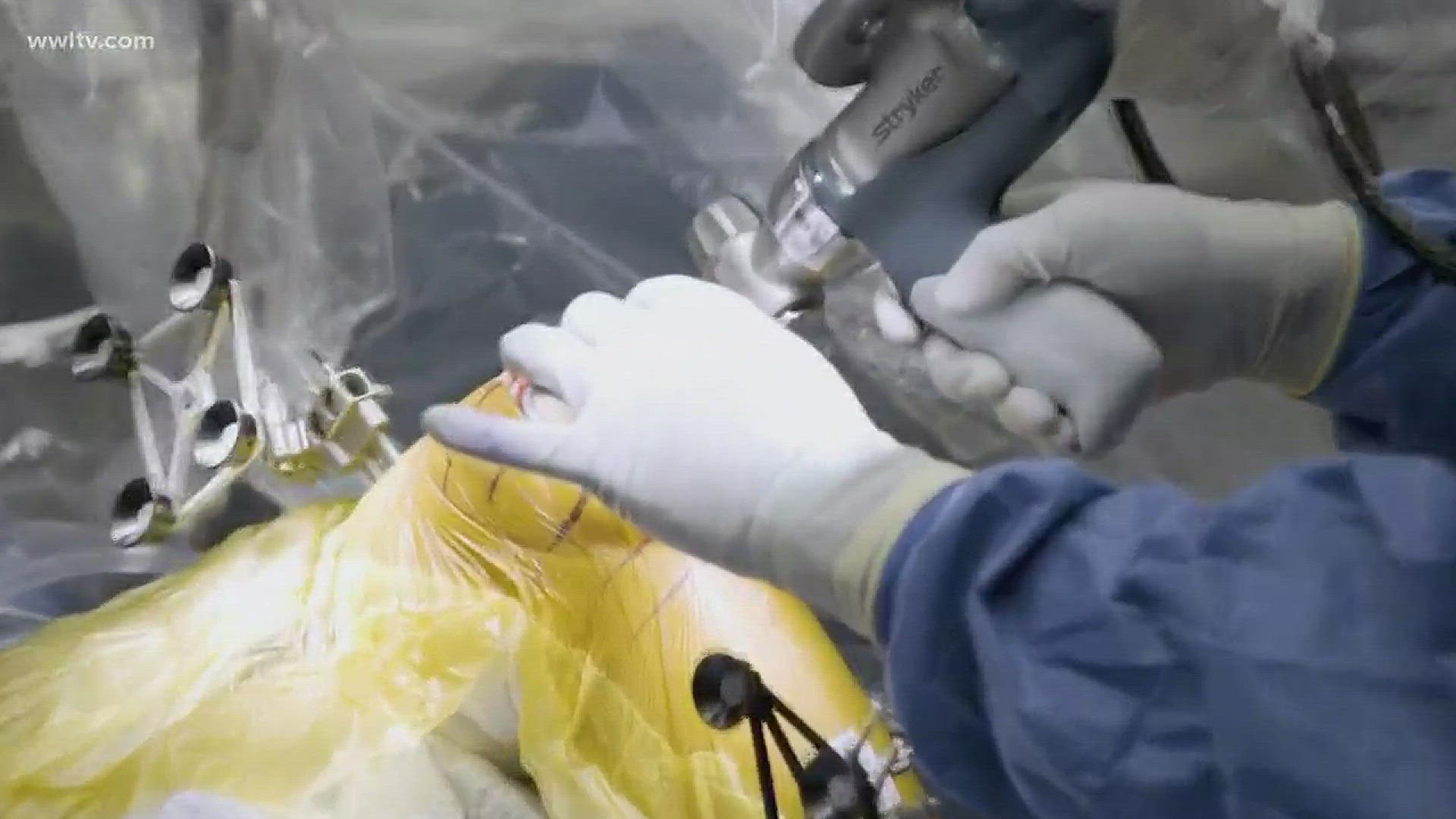When it comes to knee replacement, it is estimated that in the next decade, nearly 3.5 million people will have that surgery each year.
That's three times the entire population of the Greater New Orleans area, but now the surgeons are getting more precise in the O.R. with the help of a robot.
Susan Marsh has had a very active life; dancing classical ballet and galloping horses, but over the last several years, it was hard to do her profession of being a teacher.
"It was painful. I could barely walk. At one point, I could not walk, just the excruciating pain. When you're fighting pain, it wears you out. You get tired," said Marsh,71.
She tried it all: physical therapy, injections, knee arthroscopy, but no relief from the bone on bone pain. The doctor said it was time for a knee replacement.
"Well, you get to a point where it's just, 'Cut my leg off. Anything. I'll do whatever.' Because you're in such pain, so I was looking forward to it," she recalls.
So a month ago, she was one of the first patients at East Jefferson General Hospital to have a knee replacement where orthopedic surgeon Dr. William Sherman Jr. was assisted by the artificial intelligence of a robot.
"The robot's so accurate that you're making, as you're making a cut, if anything when I move it is outside of half a millimeter, it actually stops cutting," Dr. Sherman explained.
In pre-op, a CT scan is used to make a 3-D virtual model of your knee. Next, it's loaded into the Mako System software for a personalized plan. Then in the operating room, when the surgeon is cutting the bone for the implant, the robotic arm helps the surgeon stay within the planned boundaries. This makes the implant placement more precise, personalized and balanced, helping to protect the ligaments around the knee.
"The difference is, now with the robot, is the amount of information that we get from the patient is just, it's unparalleled. We used to make two millimeter adjustments. Now we're making half millimeter adjustments," said Dr. Sherman.
Right now, he says 18 percent of knee-replacement patients don't have good results. One of the main reasons is the knee is not aligned correctly. Dr. Sherman believes long term, this may help.
"We're hoping it adds years and years to the life span of the knee in the end, and we're hoping for a much more enjoyable lifespan of the knee," said Dr. Sherman.
Susan says healing from knee replacement is rough, but she was up and walking that afternoon and only had an epidural, a lower body nerve block, in the O.R. After four weeks, she has gained a lot of mobility in physical therapy and her scar looks good since stitches were only used on the inside with surgical glue on the skin. While there is still some discomfort, she can tell she is getting better and the pain is not the same as before.
"The care was just phenomenal." When asked if she could see a light at the end of the tunnel Marsh responded with a laugh, "I'm seeing it. It's no longer a train."
There is also a Mako robot for hip replacement surgery.

